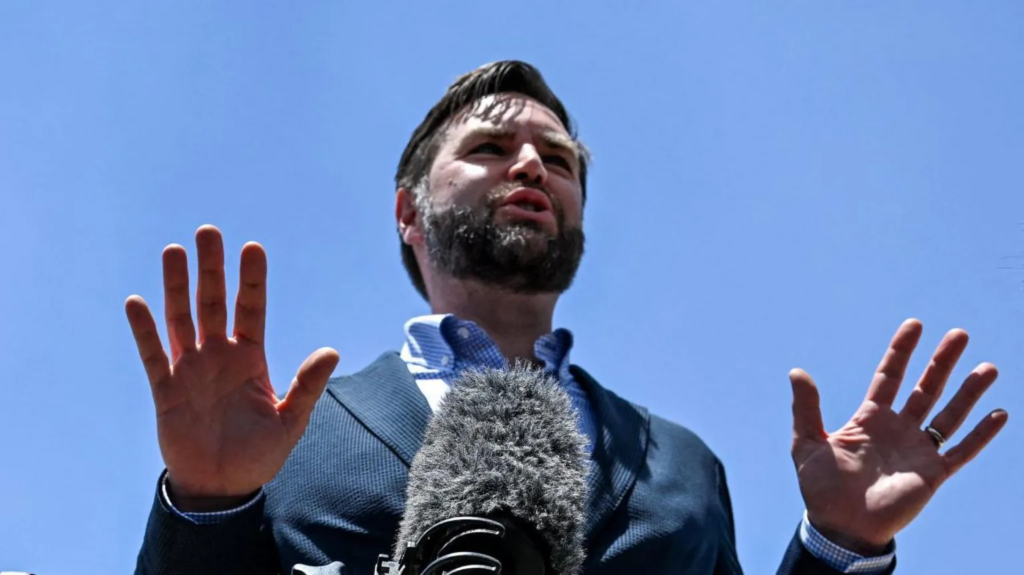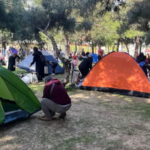Amid mounting international pressure for peace, US Vice-President JD Vance has issued a stark warning: the United States is prepared to “walk away” from the Ukraine-Russia peace process unless both sides agree to a proposed ceasefire deal.
Diplomatic Rift Grows After London Talks Downgraded

The statement comes after a significant diplomatic setback in London, where talks involving the UK, France, Germany, Ukraine, and the US were downgraded. Key US officials, including Secretary of State Marco Rubio and special envoy Steve Witkoff, unexpectedly withdrew, citing logistical issues.
Although General Keith Kellogg attended in their place, the move has raised questions about Washington’s diplomatic strategy and the urgency of peace talks. The US is now shifting focus to a separate round of negotiations in Moscow, where Witkoff is expected to meet Russian President Vladimir Putin for the fourth time.
Vance: “Say Yes or We Walk Away”
Speaking from India, Vance revealed the US had made a “very explicit proposal” to both Ukraine and Russia and emphasized the urgency of a response. “It’s time for them to either say yes or for the US to walk away from this process,” he stated. “We’ve engaged in an extraordinary amount of diplomacy.”
Zelensky Calls for Immediate and Unconditional Ceasefire
Ukrainian President Volodymyr Zelensky reinforced his country’s stance, demanding “an immediate, full, and unconditional ceasefire.” He took to social media to underscore that “stopping the killing is task number one.”
Zelensky has also firmly rejected any notion of recognizing Crimea as Russian territory, a proposal reportedly floated in behind-the-scenes discussions between US and Russian diplomats. “Ukraine does not legally recognise the occupation of Crimea. There’s nothing to talk about,” Zelensky said.
Russia’s Position and Military Escalation
While reports in the Financial Times suggest that Russia might agree to halt its invasion along current front lines in exchange for recognition of its control over Crimea, the Kremlin has denied any such discussions. Spokesman Dmitry Peskov dismissed the reports as “fakes.”
Despite a brief Easter truce, Russian attacks resumed shortly after. A drone strike in Marhanets killed nine people, and critical infrastructure in Kherson was also targeted. UK Defence Secretary John Healey confirmed no signs of a genuine ceasefire from Russia, stating that “Putin continues to play for time.”
Growing Frustration and Uncertain Outcomes
UK Foreign Secretary David Lammy hosted bilateral talks with his Ukrainian counterpart while confirming that the main diplomatic meetings were postponed. The sudden withdrawal of Rubio and Witkoff caught UK officials off guard, though both sides downplayed the fallout, citing rescheduling plans.
Ukraine’s government adviser Yuriy Sak called reports of a compromise on Crimea “naïve” and reiterated that negotiators would stick to a narrow mandate to push for a ceasefire.
What’s Next in the Peace Process?
With American diplomacy pivoting toward Moscow and direct negotiations with Putin, pressure is mounting for all parties to make meaningful concessions. However, territorial sovereignty and political legitimacy remain key sticking points, especially regarding Crimea and eastern Ukraine.
The war has killed or injured hundreds of thousands since Russia’s 2022 invasion and displaced nearly seven million Ukrainians. With no clear end in sight, this week’s talks may determine whether diplomacy can finally end Europe’s bloodiest conflict in decades—or whether the fighting will grind on.
Category: International Politics, US News, Conflict & Security, Ukraine-Russia War
Tags: Ukraine Russia war, JD Vance, ceasefire proposal, Moscow talks, Zelensky peace plan, Crimea conflict, US foreign policy, Russo-Ukrainian War 2025, diplomatic negotiations, Euro-Atlantic security









